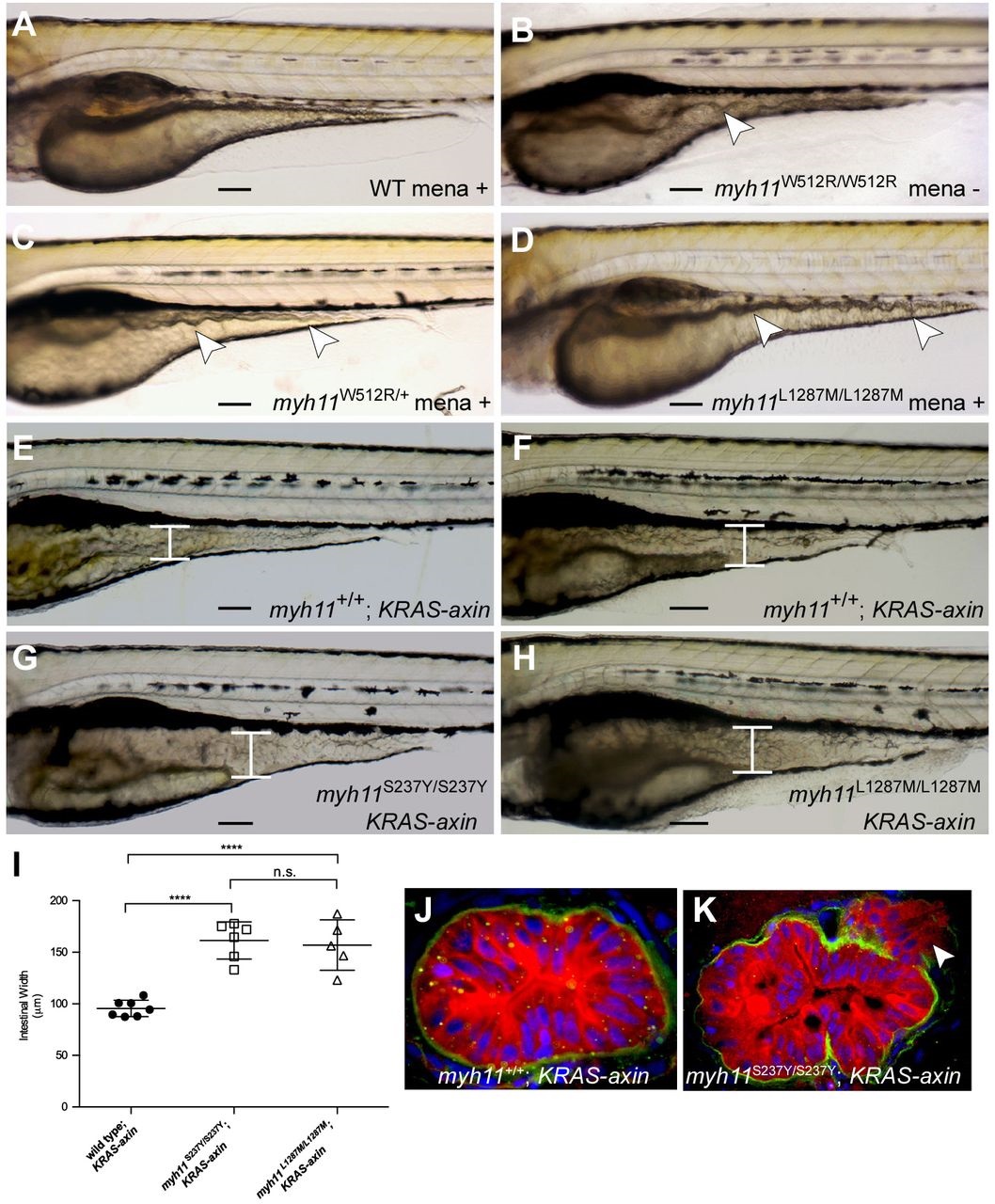Fig. 5
mlt modifier mutants are sensitized to oxidative stress. (A-D) Lateral views of 82-hpf wild-type (WT), homozygous mlt, heterozygous mlt and L1287 homozygous larvae. Wild-type (A), mlt heterozygote (C) and L1287M homozygote (D) larvae treated with menadione (1.5µM; mena). Morphological changes of the mid- and posterior intestine that are characteristic of epithelial invasion (arrowheads) are seen in the mlt larva (B) and the menadione-treated mlt heterozygote and L1287M homozygote (C,D). In all three mutant larvae, the ventral intestine appears to extend into the yolk. Intestinal morphology is normal in the wild-type larva (A). (E-H) Lateral views of 6-dpf KRAS-axin larvae that either have homozygous wild-type myh11 (E,F), S237Y (G) or L1287M (H) alleles. The intestine is expanded in KRAS-axin larvae as a result of epithelial hypertrophy (brackets, E,F). Further expansion as a result of epithelial invasion is seen in menadione-treated KRAS-axin S237Y and L1287M homozygotes (brackets, G,H), as previously reported for menadione-treated KRAS-axin mlt heterozygotes (Seiler et al., 2012). (I) Quantification of intestinal width in KRAS-axin compound-mutant larvae treated with menadione compared with untreated siblings. ****P<0.001; n.s., not significant. Unpaired Student′s t-test performed; mean±s.e.m. (J,K) Histologic analyses of immunostained larvae showing epithelial cell invasion in the intestine of a menadione-treated homozygous S237Y KRAS-axin larva (K) vs a wild-type KRAS-axin larva (J). Green, anti-Laminin-1; red, anti-Keratin; blue, DAPI-stained nuclei. Arrowhead (K) points to invasive cells. Scale bars: 100µm.

